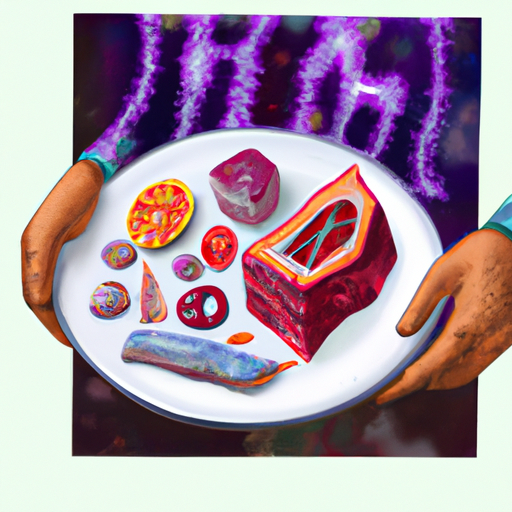Gout, a form of arthritis, is a painful condition that affects millions of people worldwide. It occurs when uric acid builds up in the body and forms crystals in the joints, leading to inflammation and severe discomfort. While there are various treatment options available, one crucial aspect of managing gout is making dietary modifications. In this article, we will explore the causes, symptoms, and diagnosis of gout, as well as delve into the key recommendations for managing the condition through diet. Additionally, we will discuss the various treatment options available, including medications, lifestyle changes, and natural remedies. By understanding the complexities of gout and implementing the right strategies, individuals can effectively alleviate their symptoms and improve their overall quality of life.
1. Understanding Gout: Causes, Symptoms, and Diagnosis
Gout is a form of arthritis that occurs when there is a buildup of uric acid in the body. This condition leads to the formation of urate crystals in the joints, causing severe pain and inflammation. Understanding the causes, symptoms, and diagnosis of gout is essential for effective management and treatment.
Causes:
The primary cause of gout is an elevated level of uric acid in the blood, known as hyperuricemia. Uric acid is a byproduct of the breakdown of purines, which are found in certain foods and also occur naturally in the body. When there is an excess of uric acid or the body fails to eliminate it efficiently, it can accumulate and form crystals in the joints, leading to gout.
Several factors can contribute to the development of gout, including genetics, obesity, high alcohol consumption, a diet rich in purines, and certain medical conditions like kidney disease or diabetes. Men are more prone to gout than women, and the risk increases with age.
Symptoms:
Gout attacks often occur suddenly and typically affect a single joint, commonly the big toe, but can also affect the ankles, knees, elbows, wrists, or fingers. The most common symptom of gout is intense pain, accompanied by swelling, redness, and tenderness in the affected joint. The affected area may feel hot to the touch, and even
2. Managing Gout through Dietary Modifications: Key Recommendations
Gout, a form of arthritis, is caused by the accumulation of uric acid crystals in the joints. This condition can be extremely painful and debilitating, making it crucial for individuals to manage their gout effectively. While medication plays a vital role in treating gout, dietary modifications are equally important in preventing gout attacks and reducing symptoms.
Here are some key recommendations for managing gout through dietary modifications:
1. Limit Purine-Rich Foods: Purines are natural substances found in certain foods that are broken down into uric acid in the body. Consuming excessive amounts of purine-rich foods can increase uric acid levels, leading to gout flare-ups. It is advisable to limit the intake of high-purine foods such as organ meats (liver, kidneys), red meat, shellfish, and certain types of fish (anchovies, sardines). Instead, opt for low-purine alternatives like poultry, tofu, legumes, and low-fat dairy products.
2. Maintain a Healthy Weight: Obesity is a known risk factor for gout as it increases uric acid production and impairs its excretion. Losing weight, if overweight, can significantly reduce the frequency and severity of gout attacks. It is essential to follow a balanced and calorie-controlled diet that includes plenty of fruits, vegetables, whole grains, and lean proteins.
3. Stay Hydrated
3. Exploring Treatment Options for Gout: Medications, Lifestyle Changes, and Natural Remedies
Gout is a form of arthritis that occurs when urate crystals accumulate in the joints, causing severe pain and inflammation. While there is no cure for gout, various treatment options can help manage the symptoms and prevent future flare-ups. In this section, we will explore the different treatment options available for gout, including medications, lifestyle changes, and natural remedies.
1. Medications:
Medications are often prescribed to provide relief from gout symptoms and reduce the risk of future attacks. Nonsteroidal anti-inflammatory drugs (NSAIDs) such as ibuprofen and naproxen sodium can help alleviate pain and inflammation during an acute gout attack. Colchicine is another commonly used medication that can ease gout symptoms by reducing inflammation.
For individuals with chronic or recurrent gout, medications like allopurinol or febuxostat may be prescribed. These drugs work by lowering the levels of uric acid in the body, thus preventing the formation of urate crystals. It is important to consult a healthcare professional before starting any medication to determine the appropriate dosage and potential side effects.
2. Lifestyle Changes:
In addition to medications, making certain lifestyle changes can significantly improve gout management. One of the key factors to address is diet. Foods high in purines, such as organ meats, shellfish, and certain types of fish, can increase uric acid

